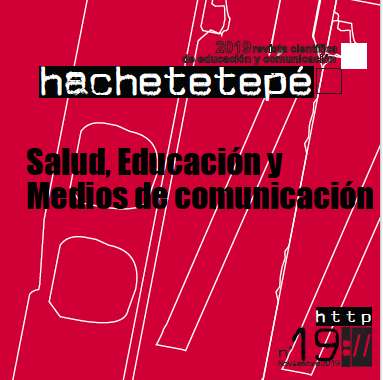Health, Migration and Trafficking in Women: Are we missing Communication and Education?
Abstract
Governments should collect, analyze and disseminate reliable and comparable data and statistics, disaggregated by gender and age at the (inter) national and local level on different forms of discrimination, exploitation and violence against women and girls. Such data should serve public education and communication policies, with the purpose of detailing the causes and consequences, including costs for public health and economic costs for societies of such discrimination and violence. All relevant factors, for example accessibility, should be considered to inform on the formulation, monitoring, effectiveness and evaluation of laws, policies and programs. A necessary reflection which evaluates how mass media amplify the intention and business of predatory sex tourism in Brazil.
Keywords
Downloads
How to Cite
License

This work is licensed under a Creative Commons Attribution-NonCommercial-NoDerivatives 4.0 International License.
Those authors who have published with this journal, accept the following terms:
- They will retain their copyright and guarantee the journal the right to first publication of their work, which will simultaneously be subject to the Creative Commons Attribution License . They may be copied, used, disseminated, transmitted and publicly displayed, provided that the authorship, url, and magazine are cited, and are not used for commercial purposes. No derivative works are allowed.
- They may adopt other non-exclusive license agreements for the distribution of the published version of the work (e.g., deposit it in an institutional telematic archive or publish it in a monographic volume) provided that the initial publication in this journal is indicated.
- Disseminate your work through the Internet (e.g., in institutional telematic archives or on your website) once the manuscript is accepted, which may lead to interesting exchanges and increased citations of the published work. (See The effect of open access).
Hachetetepé. Scientific journal of education and communication does not charge a fee for the submission of manuscripts or for the publication of its articles.
References
Hazeu, M. (2008). Pesquisa Tri-Nacional sobre Tráfico de Mulheres do Brasil e da República Dominicana para o Suriname: Uma intervenção em rede. Relatório de pesquisa. Belém, Brasil; Sodireitos.
Leal, M. L. y Leal, M. de F. (2002). PESTRAF. Brasilia: CECRIA. Disponible en: http://www.cecria.org.br/pub/livro_pestraf_portugues.pdf
Leitão, A. (2014). Tráfico de Mulheres – A Exploração Sexual no Brasil e a Violação aos Direitos Humanos. Porto Alegre: Editora Alcance.
Lozano, M. (2017). El Proxeneta – La historia real sobre el negocio de la prostitución. Barcelona: Editorial Alrevés.
Ministerio de la salud; Universidad de Brasilia (2013). Saúde, Migração, Tráfico e Violência contra Mulheres – o que o SUS precisa saber. Brasília, DF: Editora MS.
Phillips, A. (1995). The Politics of Presence. Nueva York: Oxford U. Press.
Rodrigues, T. C. (2013). Tráfico Internacional de Pessoas para Exploração Sexual. São Paulo: Editora Saraiva.
Secretaria Nacional de Enfrentamento a la Violência contra as Mulheres; Secretaria de Políticas para las Mulheres – Presidencia de la República. Brasil. (2011). Tráfico de Mujeres – Política Nacional de Enfrentamiento. Brasilia: SPM/PR.
Skjeie, H. y Teigen, M. (2005). Political Constructions of Gender Equality: Travelling Towards a Gender Balanced Society? NORA Nordic Journal of Women Studies, 13(3); 187-197.
UNITED NATIONS OFFICE ON DRUGS AND CRIME (UNODC) (2009). Global Report on Trafficking of Persons. Executive Summary. Disponible en: http://www.unodc.org/documents/humantrafficking/Executive_summary_english.pdf
UNODC. (2016). Relatório Sobre Tráfico de Pessoas. Disponible en: http://www.unodc.org/unodc/data-and-analysis/glotip.html
UNODC. (2018). Mensagem do Secretário-Geral no Dia Internacional contra o Tráfico de Pessoas. Disponible en:
Young, R. (1995). Colonial Desire: Hybridity in Theory, Culture, and Race. Nueva York: Routledge.
Zaluar, A. (2009). Agressão Física e Gênero na Cidade do Rio de Janeiro. Revista Brasileira de Ciências Sociais, 24(71); 9-24.
Zaluar, A. (2012). Desigualdades regionais do risco de mortalidade de jovens: Raça, renda e/ou escolaridade da mãe? DILEMAS: Revista de Estudos de Conflito e Controle Social, 5(3);369-386.
Zaluar, A. y Ribeiro, A. P. (2009). Teoria da Eficácia Coletiva e Violência. O paradoxo do subúrbio carioca. Revista Novos Estudos, 84; 175-196.






